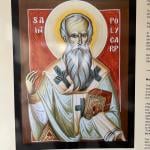A few months ago, Simon Gathercole gave a plenary paper at the BNTS on a comparison between the canonical and non-canonical Gospels. In brief, Gathercole argues that the canonical gospels are distinguished from “other” Gospels by their kerygmatic content, in that they express what became known as “the rule of faith” (regula fidei).
You can find a summary of the presentation conveniently provided by Steve Walton here. He concludes Gathercole’s point like so:
In sum, it is not that the canonical Gospels are the only ones which have any of these four ‘rule of faith’ elements—but it is the case that the four canonical Gospels are the only ones which each contain all of the four ‘rule of faith’ elements typified in 1 Corinthians 15:3-4. Gathercole notes that his argument depends neither on the relative dates of these documents (so some extra-canonical Gospels could be earlier than canonical Gospels), nor on their attestation. It is clear that the canonical Gospels are much closer to each other than any of the extra-canonical Gospels, and this is reached not by producing an arbitrary set of criteria, but by comparing the Gospels with the widely-used four elements of the apostolic gospel message.
For those interested, I’ve argued similarly in my recent book, The Gospel of the Lord, pp. 270-72, asserting that their Gospels are best descripted as a form of “biographical kerygma.”
I also recommend an old study by F.F. Bruce, “When is a Gospel Not a Gospel?” BJRL 45.2 (1963): 313-39.











